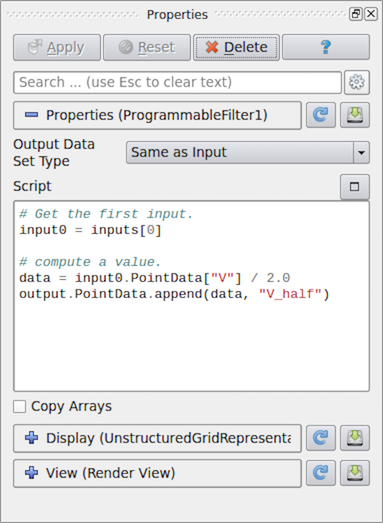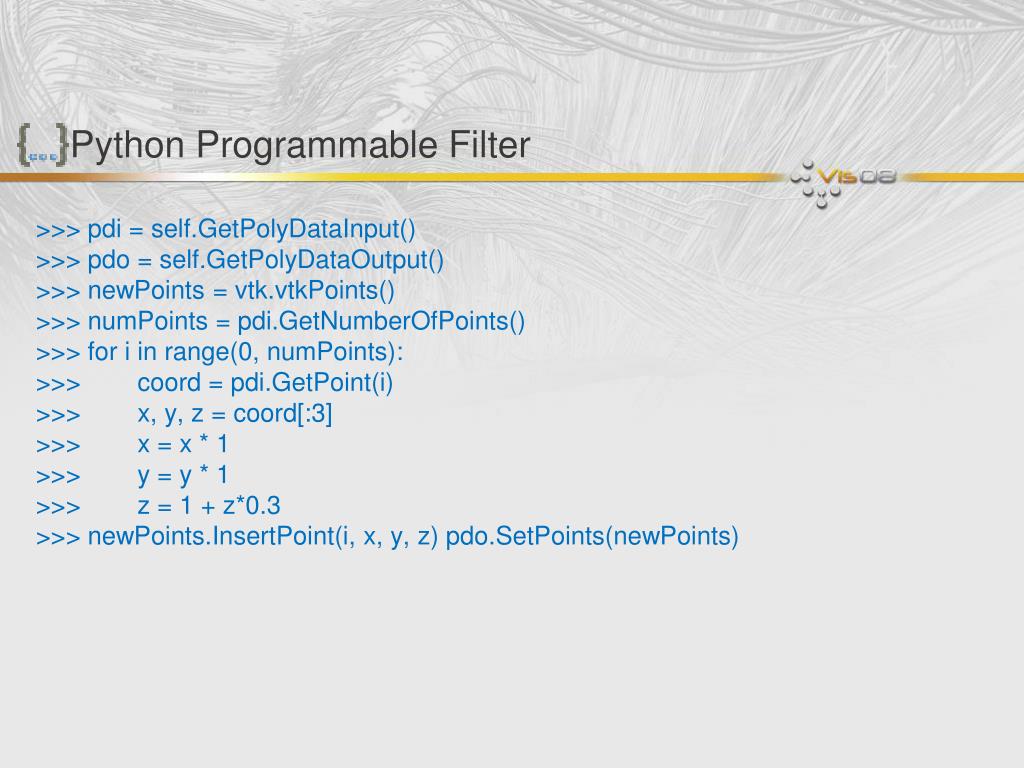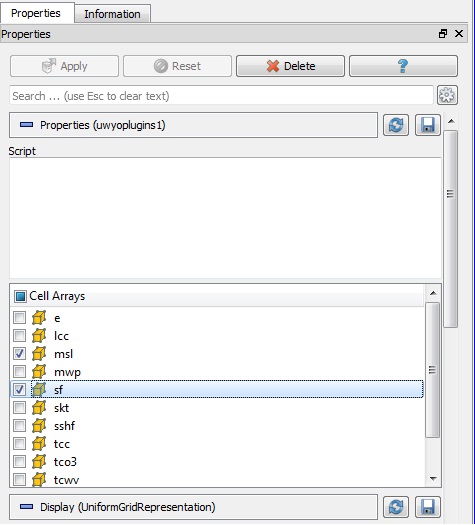
Similar to before, select the corresponding filters, locate the properties to expose, assign then some name and the click +. Let's say we want the user to be able to choose the interpolation technique as well as the maximum number of seed points genearated by the MaskPoints filter. Next page allows us to expose properties from the filters in the pipeline which the user can tweak at run-time. Following the same steps as before, expose the MaskPoints2 filters Output-0 as "SeedPoints". In that case, we should expose the output from the MaskPoints2 filter as well. Say in this case, we want the user to be able to see the points used as seed points for the stream tracer. A custom filter may have multiple outputs as well. So select the filter in the tree widget, then as before choose the output-port from this filter in the Output Port combo-box (generally there will only be one option), assign it a name (say Streamlines) and then hit the + button to add it. Since ours is a streamline tracer filter, our output is the output of the StreamTracer(CustomSource)3 filter. Next, we select the output from this filter. A custom filter may have more than one input. On success, you should see the exposed property in the list box. In our case, we select the SurfaceVector4 in the tree on the left side, then choose the input property to expose in the Input Property combo-box (generally there will only be one), give it some name, say "Input" and then hit the + button to export the property. For simple pipelines, ParaView will automatically detect the first filter and add it as the input.

identify the filter that marks the start of the pipeline and choose its input property which will be used to set the input). On the next page, we need to choose the input to this custom filter (i.e. If the name conflicts with any existing filter, you should get an error message. We are calling this "SurfaceStreamlines". The wizard will ask you use to choose a name for the filter.

With the pipeline selected, open the Create Custom Filter wizard (accessible through the Tools menu). One can use Ctrl or Shift keys for multiple selection. To create a custom filter, first select the sub-pipeline in the pipeline browser. One custom filter is going consist of the sub-pipeline after "Slice1" which has been highlighted in following image. Here the vector field source is "Slice1". The image below shows the pipeline browser for the pipeline. As a first step, we set up the pipeline in ParaView. In this example we'll create a new filter to create surface streamlines.
#PARAVIEW PYTHON PROGRAMMABLE FILTER TUTORIAL HOW TO#
One very commonly asked question on the mailing list is how to create surface streamlines. This document describes how to create and use custom filters. Additionally, the user can then share his custom filters with other users. With what we call custom filters, it is possible for the user to combine the pipeline into a single filter while exposing a set a properties from the internal filters that need tweaking.

Users often find themselves applying the same set of filters with some minor parameter tweaks for a few filters in the pipeline to different datasets. The pipeline can further process, render, or save the result. ParaView is a pipeline-based framework: the user loads in data and then applies one or more filters forming a pipeline.


 0 kommentar(er)
0 kommentar(er)
